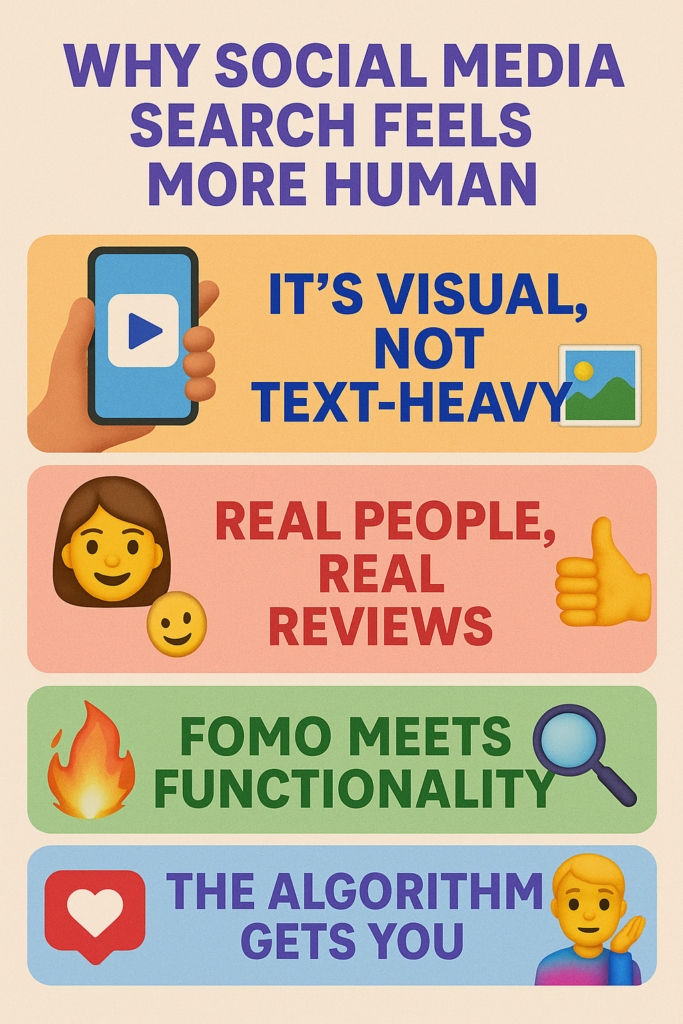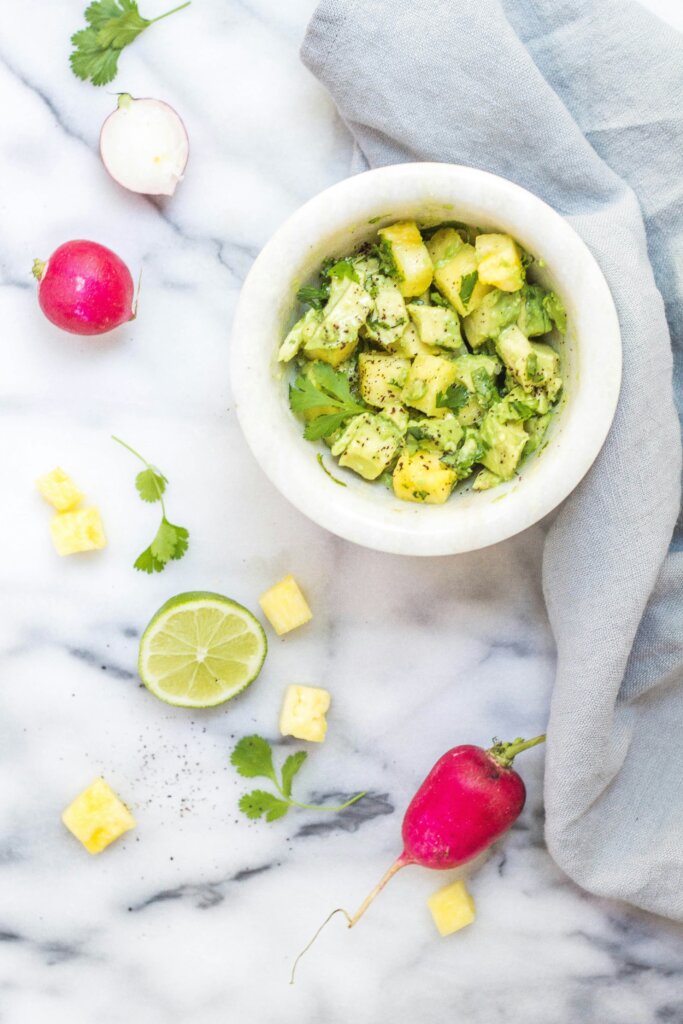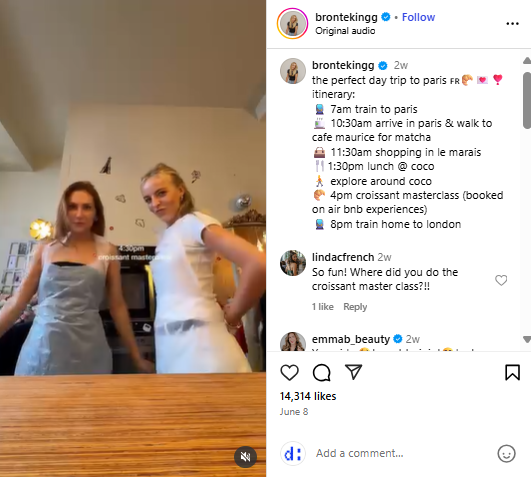
Social Media as the New Search Engine: Why Gen Z is Googling Less and Scrolling More
Remember when “Just Google it” was the ultimate clapback in an argument? Well, times are changing. If you’re under 30, chances are your first instinct isn’t to open Google—it’s to open TikTok, Instagram, or even Reddit. Whether you’re hunting for a new dinner spot, the perfect outfit inspo, or a how-to tutorial, chances are you’re finding it in a reel, a thread, or a short-form video. Social media is now wearing the crown as the new search engine, especially among Gen Z and younger millennials.
So how did we get here? And more importantly, what does it mean for brands, content creators, and traditional search engines trying to keep up with this behavior shift? As social media platforms evolve from places of entertainment to engines of exploration, it’s time to scroll through what’s changing—and why it matters more than ever.
Let’s scroll through it.
The rise of the ‘Scroll-to-Search’ generation
Picture this: You’re planning a weekend trip to Goa. You could Google “things to do in Goa.” But instead, you open TikTok and type in “Goa hidden gems.” Instantly, you’re hit with aesthetic beach shots, local café tours, and outfit inspo—all from creators who have been there, done that. It’s quick. It’s visual. It’s relatable.
This isn’t fringe behavior anymore. According to a 2024 Adobe survey, over 40% of Gen Z prefers using TikTok or Instagram over Google for search, especially when it comes to things like food, fashion, travel, or DIY hacks.
So, what’s driving this shift?
Why social media search feels more human
Why is it easier to search on Instagram or TikTok than to type into Google? Social media speaks our language because it is real-time, visual, and personal. Let’s break it down:
It’s visual, not text-heavy
Traditional search results = blocks of text and blue links. Social media search = vibrant videos, step-by-step reels, before-and-after carousels. We’re living in an attentionless economy, and a picture (or a 15-second video) speaks louder than a thousand search results.
Real people, real reviews
You may get real-time reactions and uncensored thoughts on social media about everything from beauty products to a small pizza. Not only are you reading a blog post or a Yelp review, but you are also witnessing someone try the serum on their face or eat that delicious piece of pizza.
FOMO meets functionality
Let’s be honest—nobody wants to feel outdated. Social platforms serve to search with a side of trendiness. When you search for “Hailey Bieber nails” or “mob wife aesthetic,” you’re also tapping into what’s hot right now.
The algorithm gets you
Unlike Google, which shows the same first-page results to everyone (with minor tweaks), social platforms personalize your feed—and now your search—based on your behavior. It’s tailored, familiar, and addictive.

Social media search in action: Real examples
Still not convinced that social media is replacing traditional search? Let’s examine how users are already turning to websites like YouTube, Instagram, and TikTok as their go-to resources for quickly and visually locating what they need.
TikTok as a recipe finder
Forget recipe blogs with 5-paragraph intros. A quick “high-protein lunch ideas” search on TikTok gives you 20-second recipes, grocery lists, and even cost breakdowns—perfect for college students or busy professionals.

Instagram as a travel guide
Search “Paris itinerary” and you’re met with reel guides, outfit ideas for each landmark, budget hacks, and Instagrammable café recommendations—with geotags, of course.

YouTube shorts for product demos
Want to know if viral lipstick is worth the hype? A YouTube Shorts search gives you honest wear tests, dupes, and price comparisons—all in under a minute.
What does this mean for brands
This new wave of social media search isn’t just a trend—it’s a transformation. If you’re a marketer, creator, or brand custodian, here’s the tea:
Optimize for discovery, not just SEO
Hashtags, captions, thumbnails, and even voiceovers matter. They’re your new keywords.“#dupes,” “#amazonfinds,” and “#ootd” are just as powerful as “cheap alternatives to luxury makeup.”
Think Searchable, Not Just Viral
Sure, dancing videos and memes are fun. But can your content answer someone’s query? Can it show a solution or spark an idea?
Location tags are the new local SEO
Especially for businesses like cafés, salons, or stores, tag your city, neighborhood, and vibe. Users are searching for things like “best cafes in Brooklyn aesthetic” or “Mumbai thrift haul.”
UGC is king (again)
User-generated content fuels authentic search. Encourage customers to tag you, review you, and share their experiences. You’ll show up where Google can’t.
Is traditional search dead—or just evolving?
Not quite. Google still rules when it comes to fact-based queries, academic research, and breaking news. But when it comes to discovery-based, lifestyle-driven searches—like what to wear, where to eat, or how to decorate your room—social platforms are clearly winning the race.
Even Google’s catching on. Starting July 10, 2025, it will begin indexing Instagram posts, reels, and carousels, making them searchable alongside TikToks and other social content. If you can’t beat the scroll, join it.
That said, let’s not crown social media as the ultimate search engine just yet. The shift comes with its own set of challenges. Misinformation spreads quickly—there’s no built-in fact-checker on TikTok. Algorithms can confine consumers to certain information bubbles, and echo chambers are real. Excessive customization may provide what you want to see, but it may not necessarily provide what you need to know.
Still, for digital natives, these aren’t bugs—they’re features. It’s a search that feels faster, fresher, and more human.
So, what should you do?
Whether you’re a brand, creator, or just a savvy internet user, it’s time to embrace this evolution. Here’s your mini checklist:
- Make your content searchable (think keywords + visuals + value)
- Show up where your audience is searching (hint: not always Google)
- Embrace short-form, scroll-stopping formats
- Keep it real, keep it helpful
Because the next time someone’s wondering “where should I eat tonight?” They’re not asking Google. They’re asking TikTok.
Cut to the chase
Social media isn’t just for scrolling anymore—it’s where people go to search. From recipes to reviews, users want visual, authentic, and bite-sized content. For brands and creators, this means shifting from SEO-only strategies to optimizing for social discovery. It’s not about being viral. It’s about being findable.


